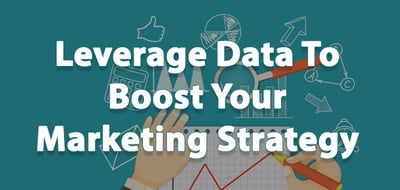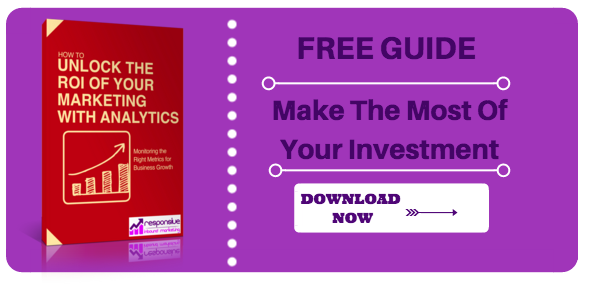I bet marketers 30 years ago wished they had a crystal ball that would show them whether or not the billboard they purchased or the postcard they sent out would yield new customers. Chances are your SaaS company doesn’t have the time nor money to waste on bold efforts that may or may not result in conversion. Lucky for us, we don’t have to rely on clairvoyant powers to determine if a strategy is effective. We’ve got something better: data. Here’s how data can improve your SaaS marketing strategy.
Lucky for us, we don’t have to rely on clairvoyant powers to determine if a strategy is effective. We’ve got something better: data. Here’s how data can improve your SaaS marketing strategy.
Make The Right Decision
When you collect and track data, you are able to make better informed business decisions and identify opportunities for improvement. Data will give you answers, removing the guesswork. When you analyze the results of your SaaS marketing strategy, you will see how people responded and if your actions had the desired effect. Making data-backed decisions starts with tracking the right metrics for your SaaS company.
Get More Qualified Leads
When your SaaS marketing strategy is built around your buyer personas, you need to understand who those people are. After all, you're goal is to market to the right people who actually have the potential to become customers, right? Understanding when you have a sales qualified lead will save your team time and money because you won’t try to sell to prospects who are not ready to buy, or who will never be ready.
Your analytics can show which landing pages are converting most, and what actions a visitor takes before becoming a lead. Analyzing a visitor's activity on your website serves as an indicator of their readiness to purchase, anddetermines which stage of the buyer's journey they're in. You should track what content a lead is engaging with, time on site and web pages viewed.
[DOWNLOAD]

Produce Better Content
Pardot reports that 72% of buyers will turn to Google during awareness stage research. Even with a software product, your buyer persona and content need to be the foundation of your SaaS marketing strategy. You can produce better content by using data to understand what resonates with your audience. Think about what questions they search for in Google, their job title or industry and what will best educate them.
“72% of buyers will turn to Google during awareness stage research,” according to Pardot via @RspnsvInbndMktg. Click To Tweet
As a SaaS business, you need to find ways to address people’s concerns about your product, especially when it is expensive or it's a big investment for a company in terms of time and resources. Building trust through your content strategy will help to reduce churn and result in more loyal customers. 70% of people are more likely to buy a product or service when it's shared online by a friend, because people buy from those they trust.
Know What Makes People Convert
In the SaaS industry, long sales cycles are common. Anything you can do to speed up that process and increase conversions sound like a good idea, right? Lead nurturing is one important way to achieve this result. Use data and demographics to segment your leads so you can send the right message and content to the right people. A personalized experience that answers any questions they have and addresses hesitations about your product can continue to move a lead along their path to purchase.
And once a lead has converted, don’t forget to continue to personalize. “Insert personalization into your customer retention strategy. Customization provides relevancy and a one-of-a-kind experience to your loyal consumers,” Kissmetrics said. The delight stage is an important part of the inbound methodology, so develop loyalty to your brand by not only providing a great product, but services and resources that allow customers to get the most out of it. 80% of your company’s future revenue will come from 20% of your existing customers, reports Retention Science.
The Free Trial
Offering a free trial of your SaaS product can provide major benefits to your company, and hopefully convert leads into customers after the trial ends. The free trial is also an opportunity to learn more about your leads and customers. Don’t try to learn everything about them in the signup form though. You want to start by making it easy and straightforward. Just like with all other interactions with your company, using a free trial should be indicative of the type of service a lead can expect if they become a customer. Don’t stop proving your value just because a lead is testing your product - you haven’t won them over yet.
![[Free Trial] Want to try HubSpot's marketing platform to attract and generate more leads and customers? Start your free 14-day trial! No commitment.](https://no-cache.hubspot.com/cta/default/389011/d414453e-53eb-4514-951f-93d7f6e4b48d.png)
By continuing the lead nurturing process during the free trial period, you're learning about user behavior. If a prospect customer fails to see the benefits from a free trial, they will most likely discontinue it. Therefore, keep tabs by monitoring how often a lead logs in to their trial, what features they use and the time spent on certain tasks. Take note if they contact customer support or access any resources during the trial. You can also follow up with a survey or chat within the platform to ask questions about their experience.
